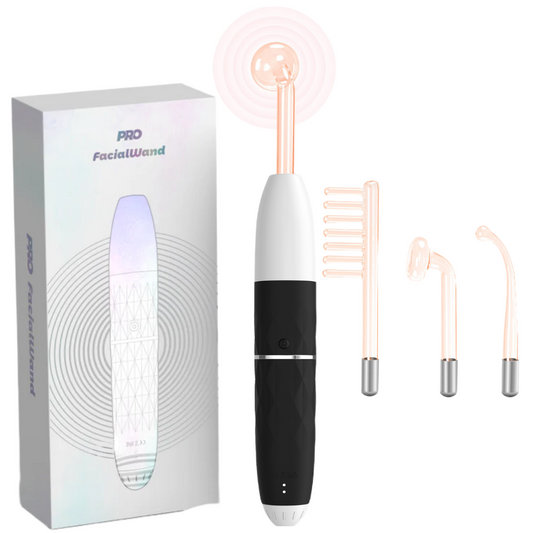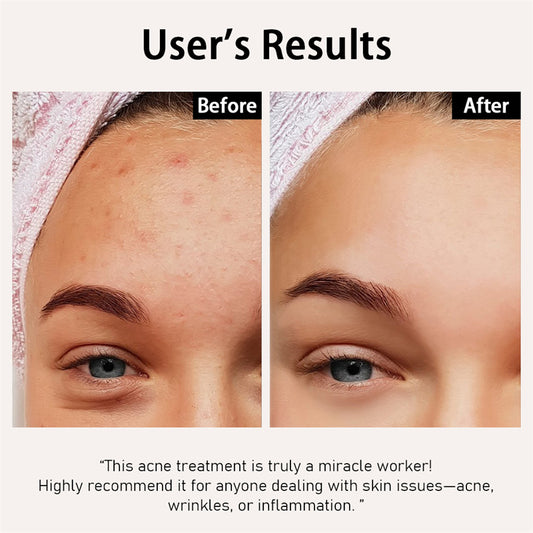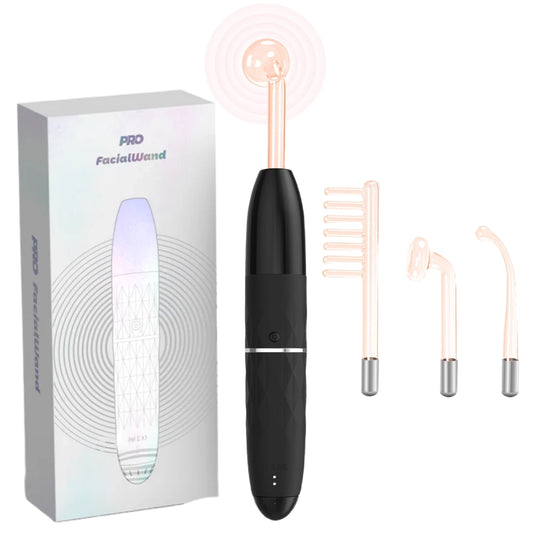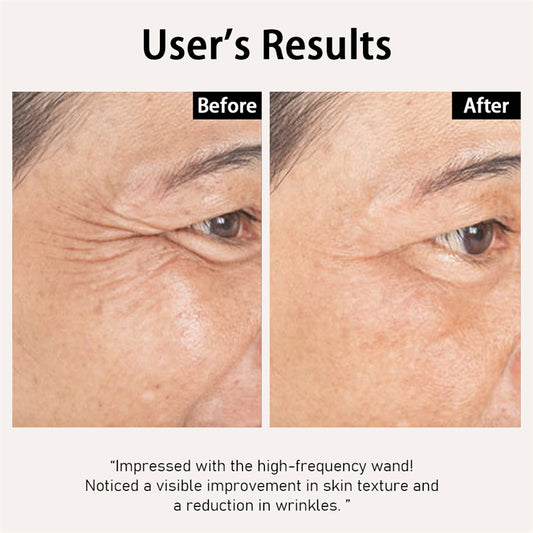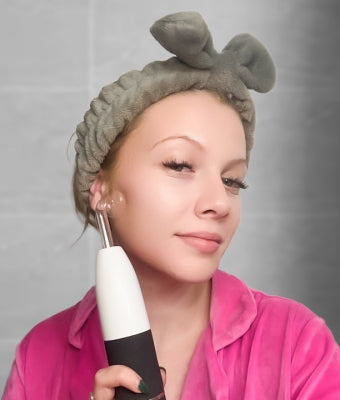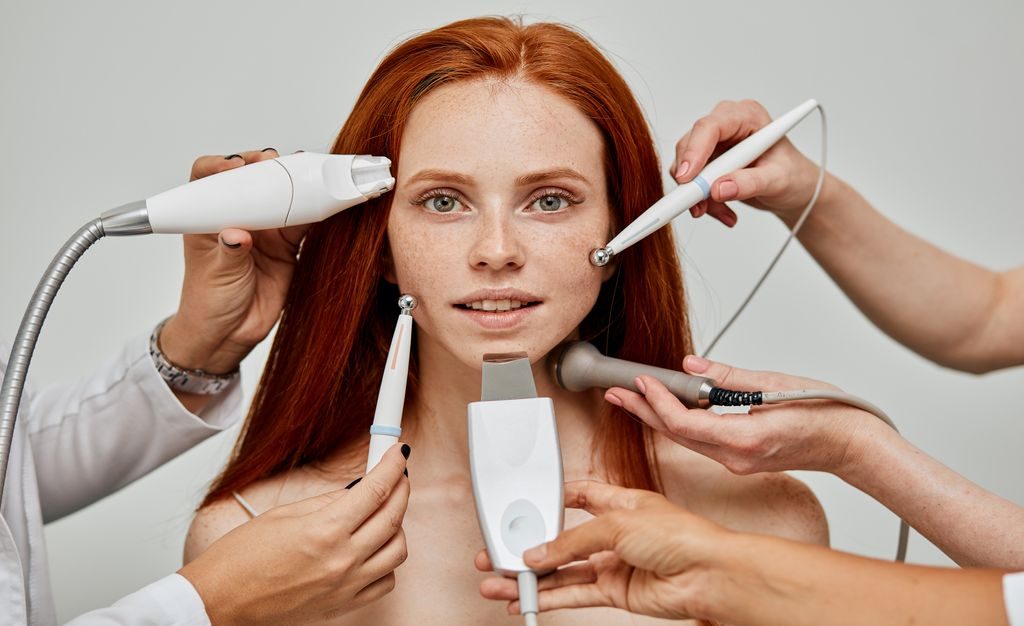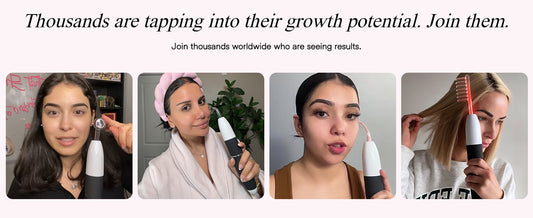Content
In today’s image-conscious society, achieving flawless, youthful skin has become an endless pursuit. Advances in technology have led to the rise of beauty devices - touted as the new must-haves for skincare. But are these high-tech gadgets really all they’re cracked up to be? Here’s an in-depth look at the world of beauty devices to help you decide if they belong in your skincare routine.
Why The Surge in Demand for Beauty Devices?
The global beauty devices market is exploding. Valued at $31.4 billion in 2017, it’s projected to reach $58.4 billion by 2024 (source: Allied Market Research report). Several factors are fueling this growth:
-
Our obsession with chasing the fountain of youth. Anti-aging products are in high demand, with the global market estimated to reach $331.41 billion by 2027.(source:Grand View Research) Beauty devices promise to turn back the clock without the need for costly cosmetic procedures.
-
Increased spending power. Especially among millennials who view beauty devices as daily essentials rather than luxuries.
-
The rise of at-home treatments. Salons are being replaced by DIY aesthetic procedures using portable devices. They promise spa-like treatments in the convenience of home.
-
Demand for immediate results. These devices use technologies like LED light therapy and radiofrequency to deliver visible improvements after each use. Their efficacy draws in consumers looking for fast-acting solutions.
With promises of flawless skin, reduced wrinkles, and diminished signs of aging, it’s no wonder beauty devices are in such high demand. Their ease of use at home makes them hugely appealing.
What Skin Problems Do Beauty Devices Claim to Fix?
Beauty devices target a wide range of skin concerns:
Aging Skin
Wrinkles, fine lines, age spots, and loss of elasticity are all inevitable signs of aging. Beauty devices use combinations of heat, light, and current to boost collagen production and smooth the appearance of wrinkles and fine lines. Microcurrent and red light therapy rejuvenate the skin, while radiofrequency tightens and lifts.
Sun Damage
UV exposure causes dark spots, uneven tone, rough texture, and collagen breakdown. LED light therapy helps repair sun damage by increasing circulation and stimulating collagen. It also destroys acne bacteria. Photorejuvenation using lasers removes pigmentation and evens out skin tone.
Dull, Dry Skin
Lackluster tone, flakiness, and roughness affect all skin types. Microdermabrasion exfoliates to reveal fresh, glowing skin. Dermaplaning gently scrapes off dead cells. Hydrating electroporation lets nourishing serums penetrate deeper. Oxygen facials rejuvenate tired skin.
Congested Skin
Blackheads, breakouts, enlarged pores - all signs of clogged, oily skin. Sonic cleansing brushes use oscillations to thoroughly clean. Blue light therapy kills acne bacteria. Radiofrequency shrinks enlarged pores. Microcurrent tightens and tones.
Cellulite
The dimpled appearance of cellulite is difficult to banish. Body contouring devices use massage, radiofrequency and infrared technologies to temporarily reduce the appearance of cellulite.
Hyperpigmentation
Dark patches, age spots, melasma - these pigmentation issues can be stubborn. Intense pulsed light (IPL) and laser devices target melanin to clear discoloration without damaging surrounding skin.
With advanced technologies and clinical-level treatments from the comfort of home, it’s easy to see the appeal of these do-it-yourself devices. But are the results as good as promised?
Who is Buying Beauty Devices?
Beauty devices appeal to a wide range of demographics looking to combat various skin concerns:
- Teenagers and college students tackling acne, blackheads and breakouts. Devices like cleansing brushes, blue light for acne, and microcurrent tools help with problem skin.
- Millennials want to look good without spending hours or money at salons. At-home beauty devices offer convenient skincare solutions.
- Middle-aged women concerned about wrinkles and sagging invest in anti-aging devices. Radiofrequency, microcurrent and light therapies target signs of aging.
- Men are a growing segment, using devices to reduce wrinkles, puffiness and other unwanted signs of aging. Beards and mustaches make many products for women unusable for them.
- Ethnicities prone to hyperpigmentation. IPL and laser devices help combat melasma, sun spots and uneven skin tone.
- New mothers trying to regain pre-pregnancy skin. Stretch marks, melasma and loose skin are common concerns that devices aim to address.
- Patients recovering from procedures like laser treatments, chemical peels and plastic surgery use beauty devices to aid recovery. LED light therapy, for example, calms inflammation.
- Individuals living far from professional estheticians in suburban and rural areas find beauty devices a more accessible option over in-office treatments.
With the variety of skin issues these devices claim to fix, it’s clear why so many consumers invest in them. But are the steep price tags truly justified?
Why Are Consumers Buying Beauty Devices?
There are several motivations behind the decision to purchase beauty devices:
- Target specific skin concerns - acne, wrinkles, sun spots, cellulite. Devices promise to address issues traditional skincare alone cannot fix.
- Prevent signs of aging - Using collagen-boosting and skin-firming tools provides anti-aging benefits without invasive procedures. Early adoption means preventing issues before they start.
- Improve skin quality - Smoother, glowier, more even-toned skin is achievable with regular use of certain tools like cleansing brushes, light therapy and microcurrent.
- Save money - At-home devices are cheaper long-term than repeated salon treatments. Though pricy upfront, their cost-per-use over time is low. Devices allow skipping costly in-office procedures.
- Look better for events - Using beauty devices before weddings, parties, photoshoots provides immediate, if temporary, improvements in appearance.
- Enjoy spa benefits at home - Devices try to mimic in-office technologies like microdermabrasion, laser and hydrafacial, providing luxurious treatments in the comfort of home.
- Treat hard-to-cover areas - Devices allow targeting concerns in visible areas like the neck, chest and hands that makeup cannot cover up.
- Strengthen usual skincare - Used with daily skincare products, these tools aim to boost absorption and results. Combining high- and low-tech can lead to improved skin.
- Prevent skincare plateau - Devices claim to solve the problem when usual products stop working as effectively over time. Their mechanisms may better stimulate collagen and cell turnover.
From tackling specific problems to enhancing skincare routines, consumers have piled into the market seeking everything today’s beauty devices promise. But separating hype from reality means looking at both the pros and cons.
Are At-Home Beauty Devices Really Worth Buying?
Cost-effectiveness
Beauty devices range widely in price - from $20 for a basic cleansing brush to $500 for high-end microcurrent or laser tools. With proper care and maintenance, they can last years, making the cost per use low over time. However, buying multiple gadgets for different concerns adds up quickly. For consumers only needing targeted solutions, single-use treatments at professional clinics may cost the same or less.
Efficacy
Independent testing shows beauty devices can indeed provide tangible improvements:
- Reduced wrinkles and skin lifting from consistent use of microcurrent and radiofrequency devices. However, results require long-term use.
- Smoother, brighter complexion from regular exfoliating and light therapy. However, these effects are temporary without ongoing use.
- Clearing of acne, dark spots and uneven tone when using blue light therapy, IPL and lasers. However, they only treat surface pigmentation issues, not deeper hormonal acne.
- Temporarily diminished appearance of cellulite after using massage and radiofrequency devices. Results do not last long after ceasing treatment.
Many reviews show noticeable but subtle changes over time. The consensus is devices alone cannot rival the dramatic outcomes of professional in-office treatments. But for consumers wanting non-invasive options, their results are decent.
Scientific Backing
Credible studies validate the efficacy of some popular device technologies:
- Radiofrequency safely heats tissue to stimulate collagen and tighten skin. Multiple studies confirm its ability to reduce wrinkles and cellulite.
- At-home microcurrent emits mild electrical currents shown in studies to tone muscle and lift skin. However, weaker at-home currents may be less effective than professional tools.
- Blue and red LED light therapy boosts circulation and skin cell function per multiple studies. It effectively treats active acne based on clinical data.
- Laser and IPL devices are FDA-cleared to permanently reduce pigmentation, hair growth, scars and sun damage. However, at-home devices are less powerful than in-office machines.
- Ultrasound used in anti-cellulite devices disrupts fat to smooth its appearance. But studies show results are temporary without lifestyle changes.
However, many marketed technologies like cryotherapy, radiofrequency microneedling, and electroporation lack extensive independent clinical data on their efficacy and safety.
Potential Risks
When used improperly, beauty devices can cause issues like:
- Burns, blistering, scarring from applying too much laser, radiofrequency or heat to the skin.
- Irritation and broken capillaries from excessive use of microdermabrasion tools.
- Damage to the natural skin barrier from over-exfoliating with brushes and acids.
- Erythema (redness) and inflammation from overuse of light therapy.
- Increased dark spots if not wearing sunscreen consistently while undergoing IPL or laser treatment.
Proper usage guidelines are essential - but insufficient evidence on device safety makes it hard to establish them. With technologies rapidly emerging ahead of regulations, many experts recommend caution until more research establishes their risks.
The Verdict?
Beauty devices shine at providing temporary improvements and maintaining results from professional treatments. As problem-solvers for specific issues, they can be worthwhile investments. However, dramatic wrinkle-erasing, sag-reversing results still require in-office technologies.
For consumers new to beauty devices, start with trusted technologies like cleansing brushes and light therapy. Skip unproven “breakthrough” devices lacking scientific validation. Maximizing devices’ benefits means using them correctly and consistently over time. And no device negates the need for sunscreen, healthy lifestyle and a solid skincare routine.
What Does the Future Hold for Beauty Devices?
Recent years have seen beauty device technology advance rapidly. Several trends are shaping the industry’s future:
-
Expanded Target Areas - Devices moving beyond the face to target hands, neck, and body. Concerns like crepey skin and keratosis will drive demand for these expanded applications.
-
Personalized Devices - Brands integrating AI to analyze users’ skin and customize device settings accordingly for optimal results.
-
More Integration with Skincare - Brushes, light therapy and microcurrent devices combining with anti-aging skincare formulations to provide two-pronged solutions.
-
Diagnostic Capabilities - Apps pairing with devices to analyze skin issues and recommend products targeting consumers’ specific problems.
-
Hair-Related Innovations - Laser helmets and handheld devices to improve hair thickness, reduce shedding, and stimulate growth at home.
-
More Clinical-Level Treatments - Stronger laser and radiofrequency tools rivaling in-office technologies, providing drastic results without leaving home.
-
Expanded Retail Availability - Major retailers like Sephora and Ulta making devices more accessible to consumers beyond niche sites.
-
Lower Price Points - Mass-market brands creating more budget-friendly options compared to posh designer devices.
-
Shorter Treatment Times - Requiring only a few minutes per session, new devices aim to fit busy, impatient consumers’ lifestyles.
With the global beauty devices industry projected to grow over 12% annually, consumers can expect even more high-tech solutions flooding the market. But the wisest approach is to embrace solid fundamentals of skincare first, while viewing devices as solutions for specific problems. Moderation, patience and proper use are key to achieving their touted benefits safely. No single device is a magic fix-all - a balanced skincare regimen tailored to your needs always delivers the most natural, lasting results.
Revive Your Skin, Restore Your Radiance.
At Lucsuer®, we believe everyone deserves healthy, vibrant skin. That dream drives our product designs. We're dedicated to innovating technologies that restore your skin's radiance and vitality. We continuously optimize our PRO FacialWand high frequency wands to revive and rejuvenate your complexion. We love hearing our customers' positive feedback, because our purpose is helping you regain confidence and beauty. We'll keep pushing boundaries through R&D to realize our vision of assisting all in rediscovering their skin's luminosity. Join us in exploring your possibilities for renewal.
